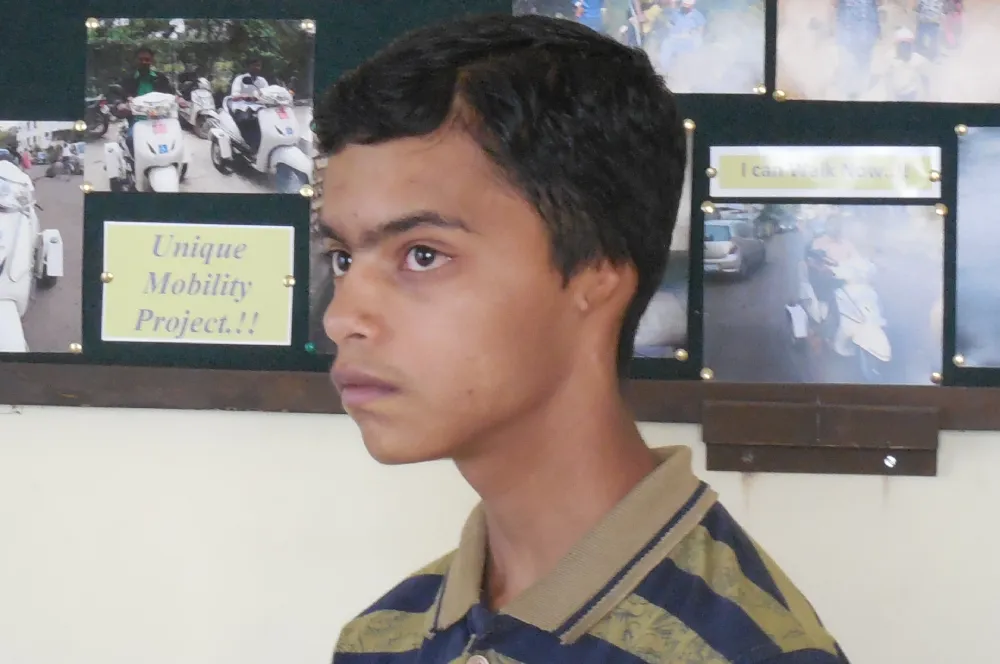
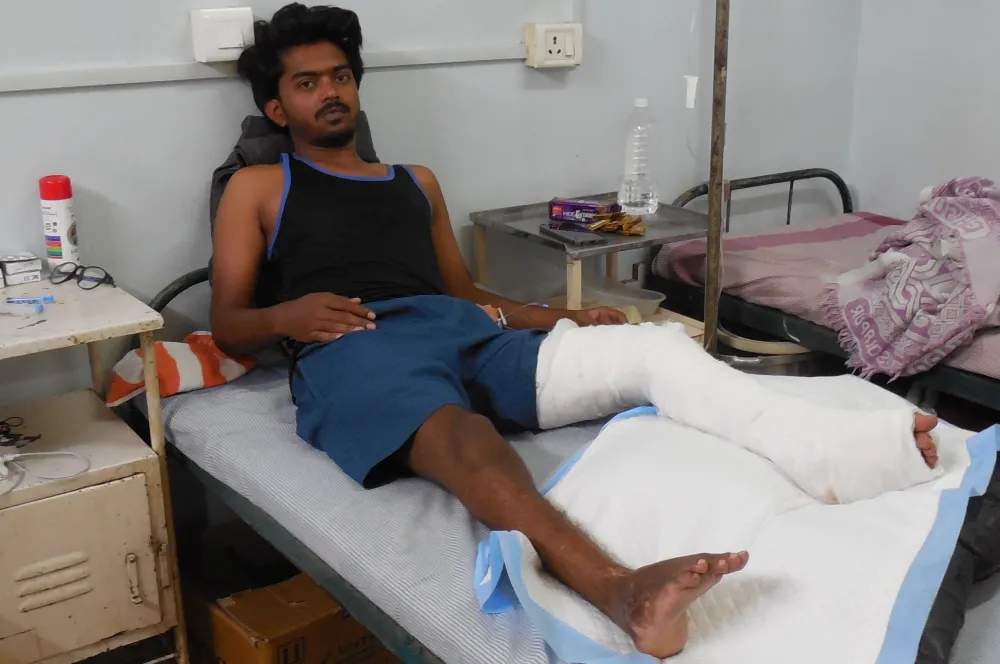
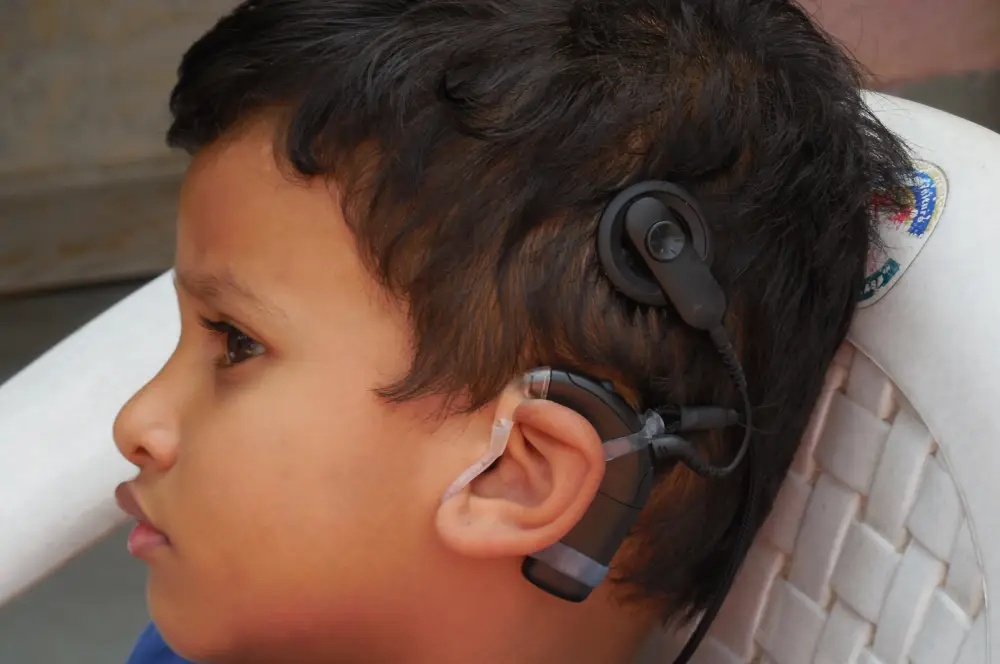
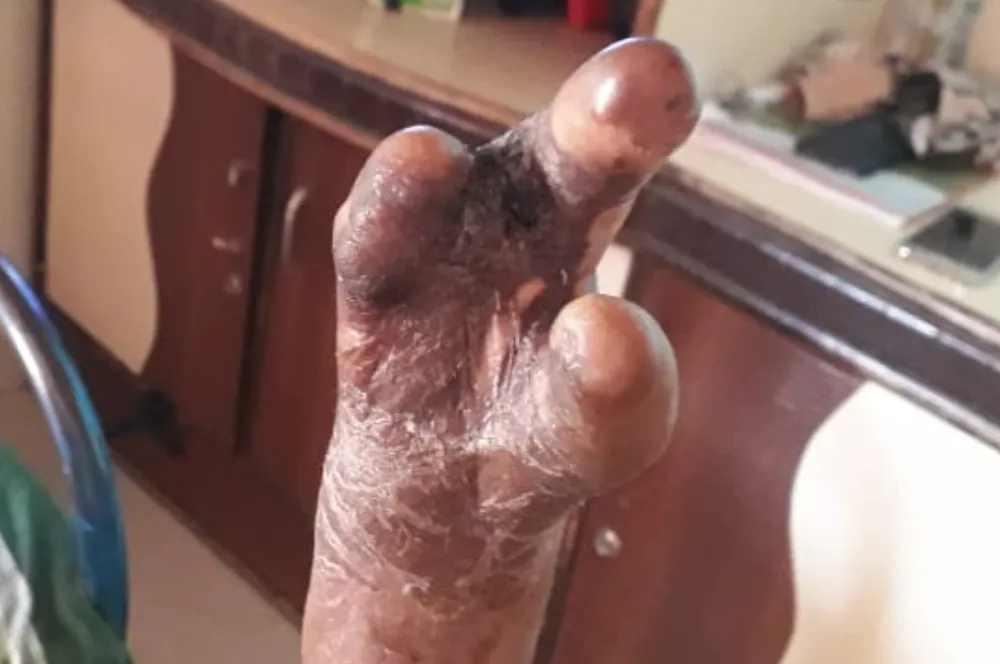
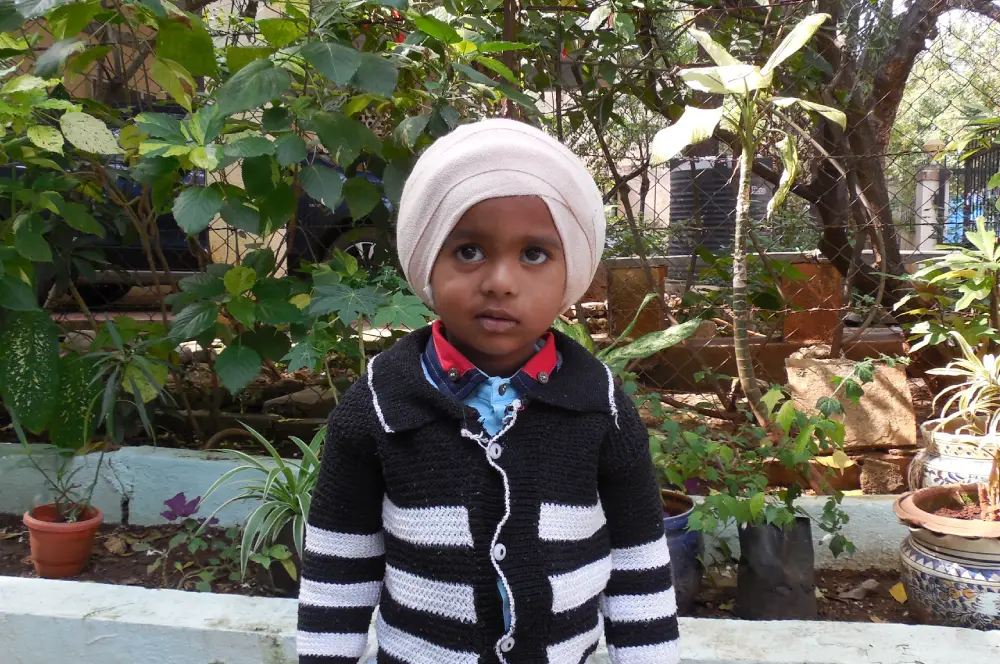

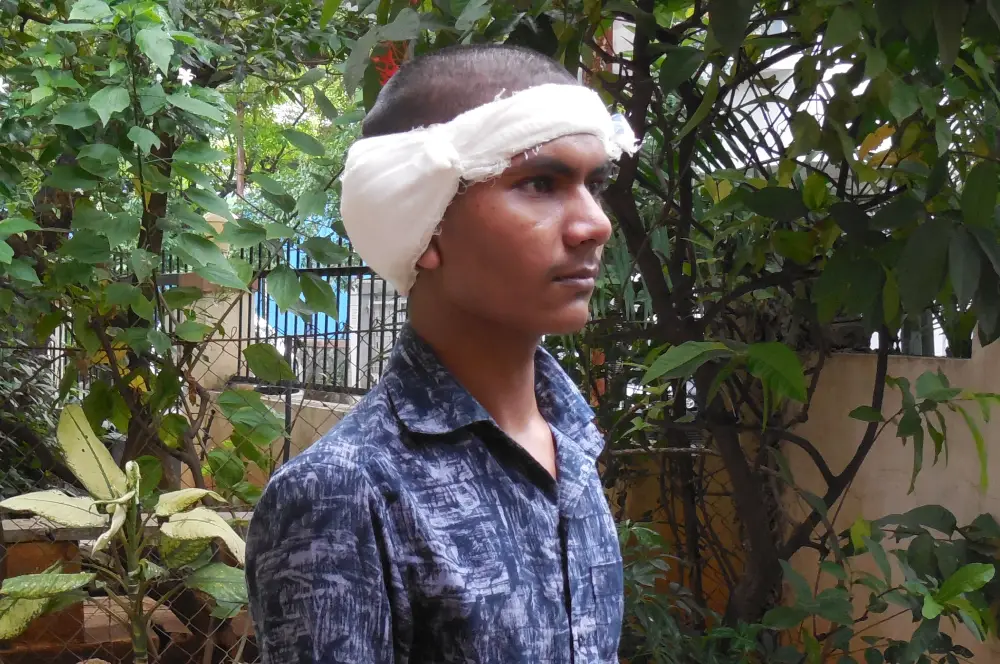
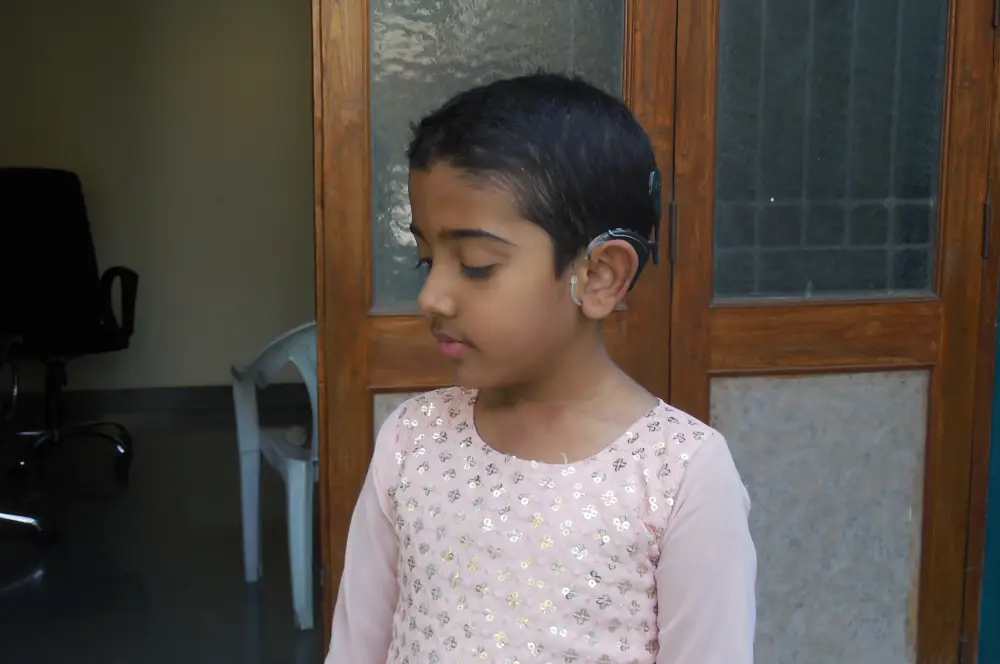
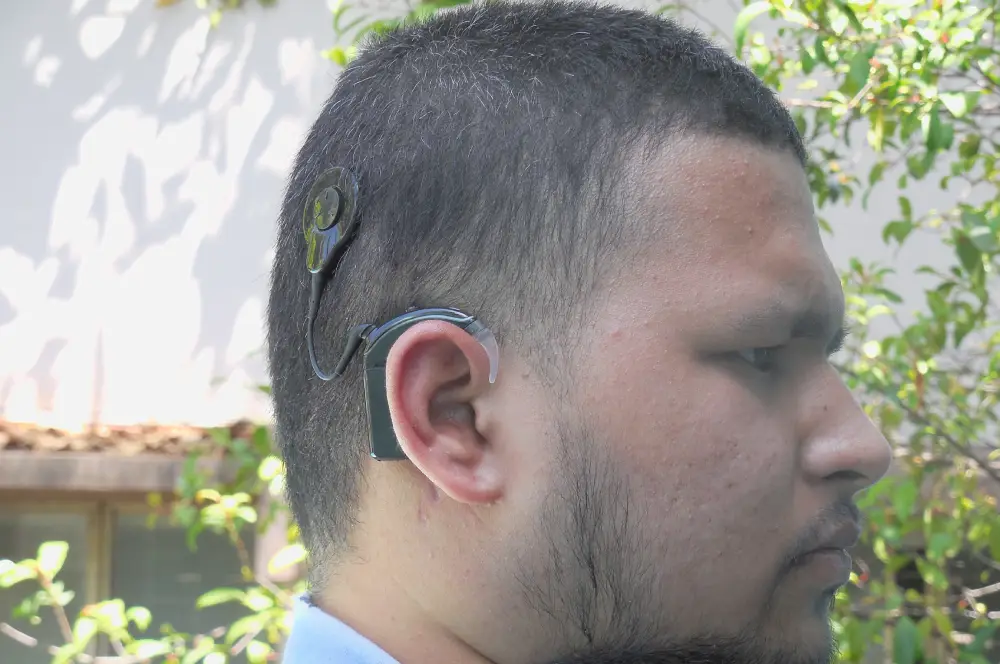
Corrective Surgery
Cochlear Implant
Overview of Cochlear Implants
Cochlear implants are electronic devices designed for individuals with severe to profound sensorineural hearing loss who do not benefit from hearing aids. Unlike hearing aids, which amplify sound, cochlear implants bypass damaged hair cells and directly stimulate the auditory nerve. The system has external and internal components. The external unit includes a microphone, speech processor, and transmitter that send signals to the internal implant. The internal receiver and electrode array convert signals into electrical impulses, stimulating the auditory nerve. This allows individuals to perceive sound, improving communication, social interaction, and overall quality of life.
Surgical Procedure and Rehabilitation
Cochlear implantation involves surgery where internal components are placed under the skin behind the ear, and an electrode array is inserted into the cochlea. After surgery, healing is required before activation. Once activated, users undergo auditory training, speech therapy, and regular check-ups to adjust the device. Early implantation in children enhances language and cognitive development due to the brain’s adaptability. Consistent therapy, parental support, and professional guidance are essential for success. The rehabilitation process helps recipients to interpret sounds effectively, improving their ability to communicate and integrate into society.
Market Availability and Cost Barriers
Cochlear implants are mainly manufactured in the USA and Australia, with a few companies monopolizing the Indian market. Their high costs make them inaccessible to many, especially those from financially weaker backgrounds. Unlike hearing aids, cochlear implants require a substantial financial investment, including surgery, programming, and post-implant rehabilitation. Many patients depend on government programs, NGOs, and charities for financial aid. Without these, access remains limited, restricting opportunities for individuals with severe hearing loss. Increased market competition and subsidies are needed to make these devices more affordable and widely accessible.
Need for Improved Accessibility and Support
Cochlear implants greatly improve the lives of people with hearing impairments, enabling participation in education, work, and social activities. However, their high-cost limits accessibility, particularly for low-income group individuals. Government and NGO initiatives are crucial for financial aid, awareness, and policy reforms. Encouraging domestic manufacturing can reduce costs and increase availability. Expanding insurance coverage and simplifying financial assistance programs would benefit more people. Increased awareness and better support systems will ensure individuals with hearing loss receive timely interventions, leading to improved communication skills and greater inclusion in society.
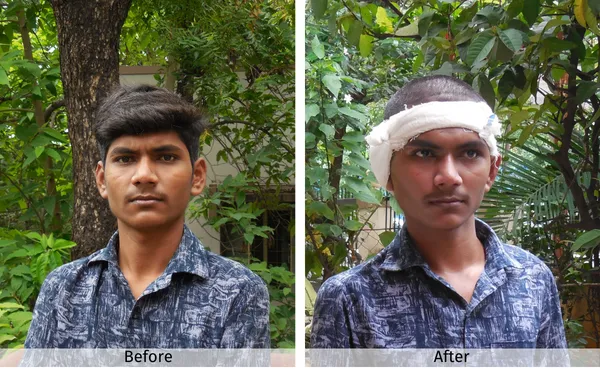
Sanket’s Journey
Background
Sanket Suryawanshi, a 20-year-old from Village Kalandi, Latur, faced a life-altering challenge when he lost his hearing ability due to a viral fever at the age of 15. Originally born with normal hearing and speech capabilities, Sanket then diagnosed as bilateral severe to profound sensorineural hearing loss. The recommended solution was a cochlear implant to help restore his hearing and enable him to engage fully with society.
The Challenge
The total estimated cost for the implant, surgery, and post-surgery rehabilitation for one ear was Rs. 6.80 lakhs. The funding sources were as follows:
- Parents’ Contribution: Rs. 2.00 lakhs
- Mukul Madhav Foundation, Pune: Rs. 1.00 lakhs
This left a funding gap of Rs. 3.80 lakhs that needed to be covered.
The Support
The Make My Dream Foundation intervened to bridge the funding gap:
- Make My Dream Foundation’s Contribution: Raised Rs. 2.80 lakhs.
- Hospital Donation: The hospital gave a discount of Rs. 1.00 lakh.
The Procedure
The surgery was successfully performed in July 2021 at Pune. Post surgery, Sanket was provided with an external sound processor for his operated ear.
The Outcome
- Sanket’s cochlear implant has significantly regained his ability to hear.
- He underwent rehabilitation to maximize the benefits of the implant.
- With his hearing restored, Sanket has successfully completed his ITI education.
- Sanket is doing a job in an electric shop, demonstrating his successful reintegration into the workforce.
The Impact
Sanket’s journey underscores the transformative impact of timely and compassionate support in overcoming significant challenges. Make My Dream Foundation’s support has played a vital role in transforming Sanket’s life, helping him overcome his hearing loss and integrate back into society.
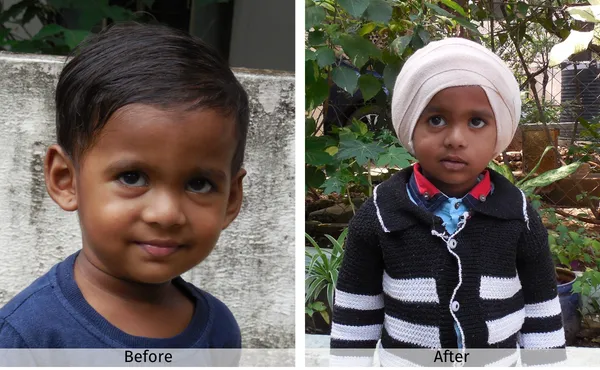
Utkarsh’s Journey
Background
Master Utkarsh Manoj Kurne, a 2.6-year-old boy from Nashik, faced a significant challenge when he was diagnosed with bilateral profound sensorineural hearing loss since birth. His doctors recommended cochlear implants for both ears to help him regain hearing and facilitate his development.
The Challenge
The total estimated cost for the implants, surgery, and post-surgery rehabilitation was Rs. 14.78 lakhs. The breakdown of financial support was as follows:
- Government Aid: Rs. 4.68 lakhs
- Mukul Madhav Foundation, Pune: Rs. 0.70 lakhs
- Ekam Foundation, Mumbai: Rs. 1.00 lakh
- Parents’ Contribution: Rs. 1.50 lakhs
This left a funding gap of Rs. 6.90 lacs that needed to be covered.
The Support
The Make My Dream Foundation took crucial steps to address the funding shortfall:
- Make My Dream Foundation’s Contribution: Raised Rs. 6.90 lakhs
The Procedure
The surgery was performed in January 2022 at Pune. Post surgery, Utkarsh received external sound processors for both ears.
The Outcome
- Utkarsh has begun to hear and is in the process of rehabilitation.
- He is developing his speech and language skills at a good pace.
- With ongoing support, he is expected to achieve near-normal speech and language development and will be prepared to integrate into a regular school for formal education.
The Impact
Make My Dream Foundation’s contributions have been instrumental in transforming Utkarsh’s life, giving him the opportunity to overcome his hearing loss and thrive in a mainstream educational environment.
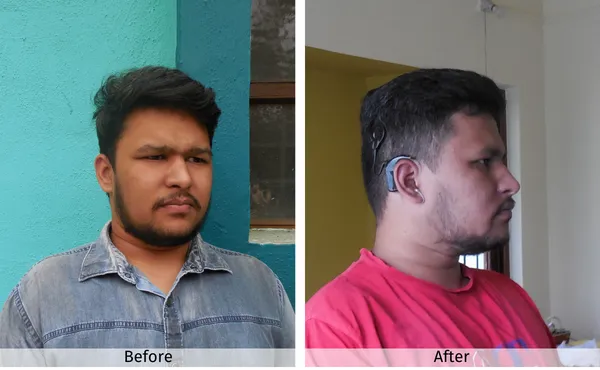
Mohsin’s Journey
Background
Mohsin Shaikh, a 20-year-old from Pune, experienced a significant shift in his hearing ability. Born with normal hearing in his right ear and profound hearing loss in his left ear, Mohsin's hearing deteriorated further at the age of 18 due to a viral infection. Despite using powerful hearing aids his hearing continued to decline, impacting his ability to pursue his Diploma in Animation. His doctors recommended a cochlear implant for right ear to help him regain hearing, preserve speaking ability and facilitate his development.
The Challenge
The total cost for the implant, surgery, and post-surgery rehabilitation was estimated at Rs. 8.00 lakhs. Funding sources were as follows:
- Parents’ Contribution: Rs. 5.75 lakhs.
This left a shortfall of Rs. 2.25 lakhs, which needed to be covered.
The Support
The Make My Dream Foundation stepped in to help bridge the gap:
- Make My Dream Foundation’s Contribution: Raised Rs. 2.25 lakhs.
The Procedure
The surgery was performed in February 2023 at Nasik. Mohsin was fitted with a Nucleus TSE Sound Processor and Nucleus Profile Slim ST Electrode (C1522) for his right ear.
The Outcome
- With the new cochlear implant, Mohsin has begun to hear again.
- He has resumed his Diploma course in Animation.
- His rehabilitation is ongoing, and he is expected to regain near-normal hearing and speech abilities.
The Impact
Make My Dream Foundation’s contributions have been instrumental in transforming Mohsin’s life, giving him the opportunity to overcome his hearing loss and remain a part of the mainstream educational environment. Make My Dream Foundation’s support has played a vital role in transforming Mohsin’s life.
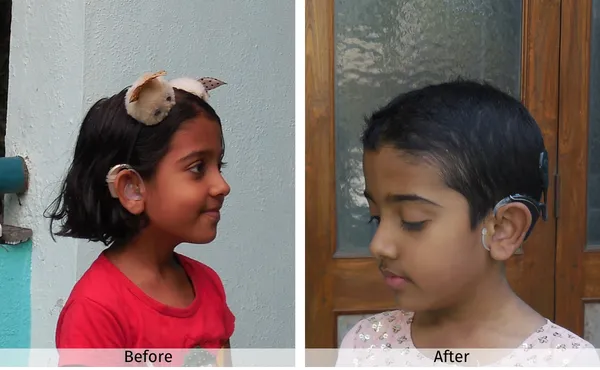
Jiya’s Journey
Background
Miss Jiya Shaikh, an 8-year-old girl from Pune, experienced a severe viral fever at 1.5 years old, which led to profound hearing loss in both ears. Despite the use of a powerful Phonak hearing aid, Jiya's hearing did not improve. She has been transferred to "Unique International School" in 2021. Despite her efforts, her hearing loss significantly affected her academic performance and speech development. The Cochlear Nucleus CI422 Implant with Nucleus 7S Sound Processor has been recommended by the doctor.
The Challenge
The total cost of the implant, surgery, and post-surgery rehabilitation, involved was Rs. 8 lakhs. Funding sources were as follows:
- TATA Trust‘s Contribution: Rs. 5 lakhs.
- Parents’ Contribution: Rs. 1.85 lakhs.
This left a shortfall of Rs. 1.70 lakhs, which needed to be covered.
The Support
The Make My Dream Foundation stepped in to help bridge the gap:
- Make My Dream Foundation’s Contribution: Raised Rs. 1.70 lakhs.
The Procedure
The surgery was successfully conducted in January 2024 at Nasik. Jiya received a sound processor for her right ear, and the initial outcomes were promising, as she began perceiving sounds immediately after the procedure.
The Outcome
- Jiya’s cochlear implant has significantly improved her hearing abilities.
- She successfully reintegrated into mainstream education and resumed her schooling with renewed enthusiasm.
- She is adapting well to her enhanced hearing capabilities.
- The cochlear implant and subsequent rehabilitation are paving the way for a brighter future for Jiya.
The Impact
Make My Dream Foundation’s unwavering support has enabled Jiya to access essential medical care and support timely, helping her to overcome the challenges of hearing loss and embrace new opportunities for growth and development. Make My Dream Foundation has been instrumental and played a crucial role in transforming Jiya's life and making a positive difference.
Sound Processors
Cost of Maintenance and Replacement
Cochlear implants require regular maintenance, particularly for external components like sound processors. Over time, wear and tear or technical issues make servicing essential. However, replacing a sound processor is costly, with prices increasing as the device ages. Manufacturers often introduce newer models, making older versions more expensive to repair or replace. For families from economically weaker sections, these costs create financial stress. Unlike surgery, which is a one-time expense, maintenance is ongoing, making long-term affordability a major concern. Without financial assistance or subsidies, many users struggle to keep their devices functioning, affecting their ability to hear and communicate.
Manufacturer Policies and Incremental Costs
Manufacturers typically estimate a sound processor’s lifespan at 3-4 years, though with proper care, it may last 7-8 years. However, older devices require frequent servicing, and replacement parts become harder to find. As processors age, manufacturers often increase costs, making upgrades expensive. Some companies phase out older models, forcing users to purchase costly replacements. These pricing policies disproportionately impact financially weaker families, who may delay necessary upgrades due to affordability concerns. Without accessible upgrade options or cost-effective solutions, long-term cochlear implant use remains a challenge for many individuals, highlighting the need for more user-friendly policies.
Availability of Parts and Out-of-Production Issues
Discontinuation of sound processors or components makes finding replacement parts difficult. Users often face long wait times, increased repair costs, or forced upgrades. These issues are particularly severe in developing countries, where supply chains are limited. Delays in repairs can lead to extended periods without a functional device, disrupting communication, education, and work. Alternative or aftermarket parts are not always available, leaving users with limited options. Ensuring long-term availability of essential components and establishing accessible service centres can help to mitigate these challenges, allowing individuals to maintain their devices without unnecessary financial or logistical burdens.
Financial Burden and Need for Support
The high cost of cochlear implant maintenance creates financial strain, particularly for low-income families. Regular servicing, repairs, and replacements require significant investment, forcing many to seek financial aid from government programs, NGOs, or charities. However, bureaucratic delays often slow down assistance, leaving users without a functional implant for extended periods. Access to timely financial support is crucial to ensure continued use of the device. Governments, manufacturers, and non-profit organizations must work together to introduce subsidies, insurance coverage, and cost-effective solutions. Advocacy for better policies can help make cochlear implants more accessible and sustainable for disadvantaged communities.
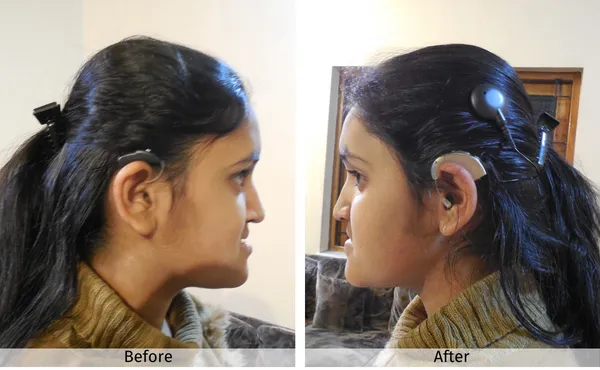
Purva’s Journey
Background
Purva Kadam, from Baramati, born with bilateral congenital profound sensorineural hearing loss. Purva underwent cochlear implant surgery in January 2009 at Pune.
Initial Success
After receiving the cochlear implant, Purva integrated into a regular school and developed near-normal speech and communication abilities. The cochlear implant played a crucial role in her ability to engage with mainstream society, enhancing her quality of life and educational experiences.
The Challenge
- By 2017, the sound processor provided to Purva in 2009 had become outdated and its functionality was compromised. An upgrade was necessary to continue benefiting from the cochlear implant technology.
- The cost of a new sound processor was quoted at Rs. 5,58,750/=.
- Given that Purva's mother is the sole earning member of the family, covering this expense posed a significant challenge.
The Support
Purva’s mother reached out to the Make My Dream Foundation in 2017 for financial assistance.
- Personal Contribution: Purva’s mother contributed Rs. 3.00 lakhs from her own resources.
- Supplier Discount: The supplier company provided a discount of Rs. 0.50 lakhs.
- Make My Dream Foundation’s Contribution: The foundation raised Rs. 2.09 lakhs.
The Outcome
Thanks to the upgrade, Purva’s hearing was significantly improved.
She successfully completed her 12th standard and is now in the process of getting admission in ISER for doctorate as she is aspiring to become scientist.
The Impact
This new chapter in her life reflects her determination and the pivotal role that proper hearing assistance has played in her educational and career goals.
Purva’s story is a testament to the positive impact of dedicated support and community involvement in transforming lives.
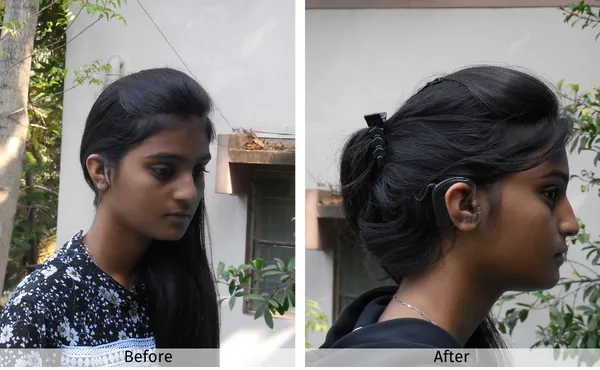
Tanishka’s Journey
Background
Tanishka Raykar, a 17-year-old from Pune, experienced a significant life change due to meningitis, which led to the loss of her hearing ability at the age of 9. In 2016, Tanishka underwent cochlear implant surgery at Pune.
Initial Success
The cochlear implant enabled her to regain near-normal hearing and speech, allowing her to integrate into a regular school and communicate effectively, enhancing her quality of life and educational experiences.
The Challenge
By October 2022, the sound processor provided to Tanishka in 2016 had become obsolete and was no longer functioning properly.
The cost for repairs was substantial, and an upgrade was necessary. The new sound processor was priced at Rs. 3,12,900/=.
Tanishka’s father, the sole earning member of the family, faced financial difficulties.
The Support
The Make My Dream Foundation stepped in to assist with the following contributions:
- Personal Contribution: Tanishka’s father raised hand loans and contributed Rs. 2.00 lakhs.
- Make My Dream Foundation’s Contribution: Raised Rs. 1.00 lakh.
- Deferment: Mandke Hearing Services allowed a deferment in payment for the balance of Rs. 12,900/=.
The Outcome
With these combined efforts, the project was successfully completed in December 2022.
The timely support ensured Tanishka to continue her education seamlessly and maintain her academic progress.
She is currently pursuing her 12th standard Arts.
The Impact
Tanishka’s journey underscores the transformative impact of timely and compassionate support in overcoming significant challenges. Her continued success in education is a testament to the power of community support and strong efforts of Make My Dream Foundation.
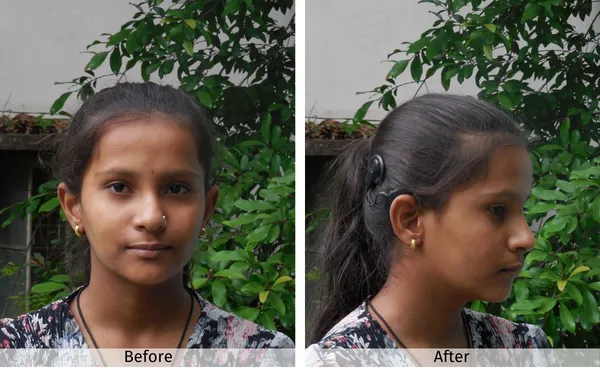
Gauri’s Journey
Background
Gauri Pansare, a 13-year-old from Village Nimboli, Ahmednagar, experienced bilateral profound sensorineural hearing loss since birth. In January 2016, Gauri underwent cochlear implant surgery at Pune.
Initial Success
The cochlear implant enabled her to regain near-normal hearing and speech, allowing her to integrate into a regular school and communicate effectively, enhancing her quality of life and educational experiences.
The Challenge
By January 2024, the sound processor provided to Gauri in 2016 had become obsolete and was no longer functioning properly.
The cost for repairs was substantial, and an upgrade was necessary. The new sound processor was priced at Rs. 3,12,900/=.
Gauri’s father, the sole earning member of the family, faced financial difficulties.
The Support
The Make My Dream Foundation stepped in to assist with the following contributions:
- Personal Contribution: Gauri’s father raised hand loans and contributed Rs. 212900/=.
- Make My Dream Foundation’s Contribution: Raised Rs. 1.00 lakh.
The Outcome
With these combined efforts, the project was successfully completed in July 2024.
The timely support ensured Gauri to continue her education seamlessly and maintain her academic progress.
She is currently pursuing her 7th standard.
The Impact
Gauri’s journey underscores the transformative impact of timely and compassionate support in overcoming significant challenges. Her continued success in education is a testament to the power of community support and strong efforts of Make My Dream Foundation.
Other Corrective Surgeries
Understanding Corrective Surgery
Corrective surgery aims to treat limb deformities, whether congenital or due to accidents, restoring normal function and appearance. Early intervention is crucial as it improves recovery speed and long-term outcomes. Many individuals, especially from underprivileged backgrounds, remain unaware of available treatments. Without timely surgery, conditions may worsen, limiting mobility and quality of life. Raising awareness and ensuring accessibility to corrective procedures can help individuals lead more independent and fulfilling lives.
Challenges for Economically Weaker Sections
Financial constraints and lack of awareness prevent many individuals from accessing corrective surgery. Families from disadvantaged backgrounds often struggle with medical expenses, delaying necessary treatment. Additionally, misinformation or fear of surgery can lead to reluctance in seeking help. Without proper intervention, deformities can become more severe, affecting mobility, self-esteem, and social inclusion. Addressing these challenges requires financial aid, educational efforts, and accessible healthcare facilities to ensure everyone receives the necessary treatment.
Make My Dream Foundation’s Approach
Our foundation identifies cases of untreated deformities and educates individuals and families about corrective surgery. We connect them with skilled medical professionals, ensuring they understand the procedure, recovery, and benefits. Financial limitations are addressed through fundraising initiatives to cover medical costs. Our approach focuses on empowering individuals with knowledge, preparing them emotionally and physically for surgery, and ensuring they receive the best possible care. Comprehensive support enhances successful treatment outcomes.
Post-Surgery Support and Outcomes
After surgery, we provide rehabilitation support, monitoring recovery to ensure a smooth healing process. Follow-ups assess the effectiveness of the procedure, and we celebrate improvements in functionality and quality of life. The foundation aims to transform lives by helping individuals regain mobility and confidence. Through continuous care and encouragement, we ensure every patient benefits fully from the surgery, creating success stories that inspire hope and change in the community.
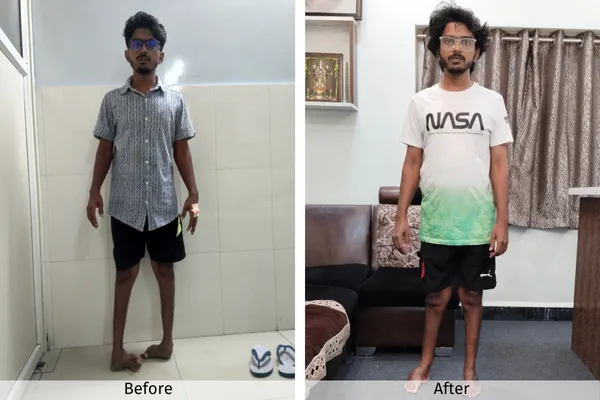
Rangnath’s Journey
Background
Rangnath Gadekar, who has been supported by the Make My Dream Foundation since the academic year 2016-2017, successfully completed his Bachelor in Fine Arts with our financial assistance. Rangnath, who has long struggled with a congenital condition known as clubfoot, faced significant challenges due to untreated complications from his childhood. His condition caused him considerable pain while walking and severely restricted his mobility.
The Challenge
Clubfoot is a congenital deformity affecting the bones, tendons, and muscles of the foot, causing it to turn inward and downward. For Rangnath, this condition led to painful walking and limited movement. Following his educational achievements, Make My Dream Foundation committed to provide support for Rangnath’s corrective surgeries to enhance his quality of life.
The Solution
Rangnath was referred to a specialist orthopedic surgeon at Pune. Due to the severity of Rangnath’s condition and his age, Doctor recommended a multistage surgical approach. The corrective procedures were as follows:
Stage 1: Soft Tissue Release and Partial Correction
- Procedure: This stage involved a soft tissue release and partial correction of the deformity, followed by the application of AK stretching casts.
- Timing: The surgery for the right foot was conducted in June-July 2021.
Stage 2: Triple Arthrodesis
- Procedure: This stage included a Triple Arthrodesis involving the Calcaneo-Cuboid Joint, Subtalar Joint, and Talo-Navicular Joint. The procedure involved deformity correction and fixation with multiple K-wires, followed by corrective casts.
- Timing: After the complete recovery of the right foot, the first and second stage of the left foot surgery was performed in March – April 2022.
The Outcome
The surgeries have led to a significant improvement in Rangnath’s mobility. He now walks normally with the aid of calipers and has experienced considerable enhancements in both his personal and functional life. The overall duration for surgery and recovery of both feet was approximately 1.5 years.
Success
Make My Dream Foundation extends its heartfelt gratitude to the individuals involved in this crucial project. We are proud to have been a part of Rangnath’s journey towards better health and independence. Our support has made a meaningful difference in his life, helping him overcome significant physical challenges and significantly improving his overall well-being.
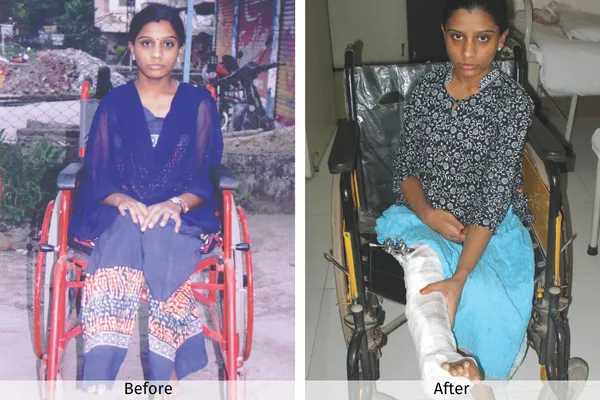
Akshada’s Journey
Background
Akshada Langote, who has been supported by the Make My Dream Foundation since the academic year 2011-2012, successfully completed her Diploma in Travel and Tourism with our financial assistance. Akshada, who has long struggled with severe polio, faced significant challenges due to both lower limbs and right hand badly impacted by polio. Her condition caused her wheelchair bound mobility, else to be assisted by the caretakers.
The Challenge
Polio deformity affecting the both lower limbs and right upper limb restricted her life mostly to inhouse activities. Her formal education is restricted to 10th standard only. For Akshada, this condition led to painful mental trauma. Make My Dream Foundation committed to provide support for Akshada’s corrective surgeries to enhance her quality of life.
The Solution
Akshada was referred to a specialist orthopedic surgeon at Pune. Due to the severity of Akshada’s condition and her age, Doctor recommended a surgical correction of right leg knee bones. The corrective procedures were as follows:
Stage 1: Complete Correction
- Procedure: This stage involved a correction of the deformity, followed by the application of AK stretching casts.
- Timing: The surgery for the right foot was conducted in January 2011.
Stage 2: Use of Callipers and Crutches
- Procedure: This stage included a practice of walking using KFO and Crutches for about 4 months.
The Outcome
The surgery led to a significant improvement in Akshada’s mobility. She now walks normally with the aid of calipers and crutches and has experienced considerable enhancements in both her personal and functional life.
Success
Make My Dream Foundation extends its heartfelt gratitude to the individuals involved in this crucial project. We are proud to have been a part of Akshada’s journey towards better health and independence. Our support has made a meaningful difference in her life, helping her overcome significant physical challenges and significantly improving her overall well-being.
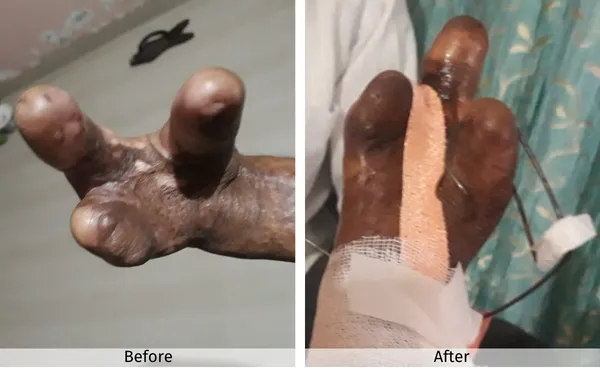
Sayali’s Journey
Background
Akshada Langote, who has been supported by the Make My Dream Foundation since the academic year 2011-2012, successfully completed her Diploma in Travel and Tourism with our financial assistance. Akshada, who has long struggled with severe polio, faced significant challenges due to both lower limbs and right hand badly impacted by polio. Her condition caused her wheelchair bound mobility, else to be assisted by the caretakers.
The Challenge
Polio deformity affecting the both lower limbs and right upper limb restricted her life mostly to inhouse activities. Her formal education is restricted to 10th standard only. For Akshada, this condition led to painful mental trauma. Make My Dream Foundation committed to provide support for Akshada’s corrective surgeries to enhance her quality of life.
The Solution
Akshada was referred to a specialist orthopedic surgeon at Pune. Due to the severity of Akshada’s condition and her age, Doctor recommended a surgical correction of right leg knee bones. The corrective procedures were as follows:
Stage 1: Complete Correction
- Procedure: This stage involved a correction of the deformity, followed by the application of AK stretching casts.
- Timing: The surgery for the right foot was conducted in January 2011.
Stage 2: Use of Callipers and Crutches
- Procedure: This stage included a practice of walking using KFO and Crutches for about 4 months.
The Outcome
The surgery led to a significant improvement in Akshada’s mobility. She now walks normally with the aid of calipers and crutches and has experienced considerable enhancements in both her personal and functional life.
Success
Make My Dream Foundation extends its heartfelt gratitude to the individuals involved in this crucial project. We are proud to have been a part of Akshada’s journey towards better health and independence. Our support has made a meaningful difference in her life, helping her overcome significant physical challenges and significantly improving her overall well-being.
BAHA Implants
Understanding BAHA Implants
Bone Anchored Hearing Aids (BAHA) help individuals with conductive or mixed hearing loss and single-sided deafness. Unlike traditional hearing aids, BAHA works through bone conduction, bypassing the outer and middle ear to directly stimulate the inner ear, improving sound perception.
Surgical Insertion Process
A small titanium implant is surgically placed in the bone behind the ear. Over time, it integrates with the bone through osseointegration. This secure anchoring allows efficient sound transmission, ensuring stable and long-term hearing improvement for individuals who cannot use regular hearing aids.
How Sound Transmission Works
The BAHA device attaches to the implant, capturing sound and converting it into vibrations. These vibrations travel through the skull bone to the cochlea, where they are processed as sound. This direct stimulation provides clearer hearing without relying on the outer or middle ear.
Postoperative Rehabilitation
After surgery, a healing period allows the implant to integrate with the bone. Once healed, the external processor is fitted and adjusted for comfort. Follow-up appointments help fine-tune the device, ensuring optimal hearing improvement, making BAHA an excellent option for those with specific hearing loss conditions.
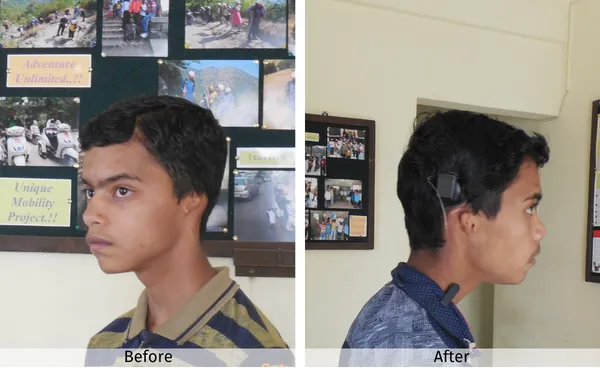
Omkar’s Journey
Background
Omkar Ranjit Kadam, a 16-year-old student from Gajawadi village, has born with bilateral microtia and moderate to severe conductive hearing loss.
The Challenge
- Omkar faced significant challenges in hearing and communication due to his congenital condition, which included missing outer ears and ear canals on both sides.
- Omkar's hearing impairment impacted his academic performance and social interactions.
- His family, struggling with financial constraints as poor farmers, sought medical advice and learned that a BAHA (Bone Anchored Hearing Aid) implant could greatly improve his hearing, speech perception, and overall quality of life.
- However, the cost of the BAHA 4 system implant was quoted at Rs. 4.98 lakhs, an amount beyond their means.
The Support
- In August 2015, Omkar’s family approached Make My Dream Foundation for financial support and guidance, during a camp in Sonwadi-Gajawadi Village.
- The foundation took on the challenge of raising funds for the implant.
- The parents opted for enhanced BAHA implants (1.3 tesla) for better MRI compatibility.
- The journey to securing the necessary funds involved significant efforts:
- Dr. Hetal Marfatiaan ENT Surgeon from K.E.M., Mumbai, played a crucial role in the operation and fundraising.
- Tata Trustscontributed Rs. 3.63 lakhs.
- Murli Laj Chungai Charity Trust contributed Rs. 0.40 lakhs.
- Make My Dream Foundationraised around Rs. 1 lakh.
The Procedure
In August 2016, the surgery was successfully performed, and after completing the process of osseointegration in November 2016, Omkar began to hear normally.
The Impact
This was a pivotal moment in Omkar’s life, marking a significant improvement in his ability to engage with the world around him.
Now able to hear clearly, he has excelled academically and successfully completed a Bachelor of Arts. He also did a diploma in Hotel Management and a few short-term computer courses.
Omkar is now looking for a suitable job.
Looking Forward
Make My Dream Foundation, emphasizes that their mission extends beyond providing medical aid.
The foundation aims to foster self-reliance and help individuals achieve their long-term goals. Omkar's journey is a testament to their dedication and the collaborative efforts of various supporters.
Omkar’s story is a powerful reminder of how targeted support and community efforts can transform lives, enabling individuals to overcome significant challenges and pursue their dreams with newfound confidence.
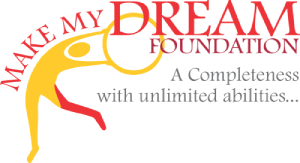
Saksham’s Journey
Background
Master Saksham Chougule, a 2.5-year-old boy from Pune, has suffered with bilateral profound sensorineural hearing loss since birth. Early intervention was crucial, and his doctors recommended cochlear implants for both ears to enable him to develop language skills and integrate into mainstream education.
Master Saksham Chougule, a 2.5-year-old boy from Pune, has suffered with bilateral profound sensorineural hearing loss since birth. Early intervention was crucial, and his doctors recommended cochlear implants for both ears to enable him to develop language skills and integrate into mainstream education.
The Challenge
The total estimated cost for the cochlear implants, surgery, and post-surgery rehabilitation was Rs. 12.83 lakhs. The breakdown of funding sources was as follows:
This left a gap of Rs. 2.43 lakhs that needed to be covered.
The Support
The Make My Dream Foundation stepped in to assist with the following:
The Procedure
The surgery was successfully performed in March 2020 at Pune. Post surgery, Saksham was fitted with external sound processors for both ears.
The Outcome
The Impact
Saksham’s journey underscores the transformative impact of timely and compassionate support in overcoming significant challenges. He was admitted in 1st grade in regular English medium school under inclusive education. Make My Dream Foundation has been instrumental in his progress and integrated education.